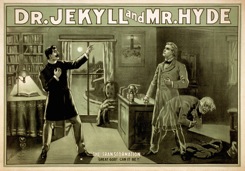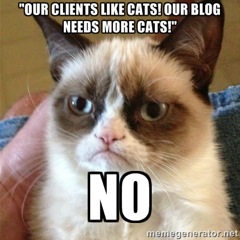
By Mike Straus, from The UX Booth – http://bit.ly/1s8fAJX
Content marketing is a robust and focused form of marketing, and yet it’s all too common for businesses to invest in content marketing and see it fail. Why? Simple: content marketing can’t just be done, it needs to be done well. This week, Mike Straus shows us how content marketing can be done, and done well.
Last year, a client came to Velocity Partners with a b2b content marketing challenge: to market a fantastic (and free) software program to existing customers. Velocity Partners prepared two eBooks to explain the software, and as a control ran visual ads on the client’s website and sent sales emails to the client’s contacts, using software downloads as their success metric. To their surprise, the eBooks underperformed relative to the direct marketing. Their content marketing failed.
It’s not an uncommon story: a business invests resources into a marketing campaign, only to see it miss the mark. Velocity’s content marketing failed. Why? According to Creative Director Doug Kessler, “The client’s awesome software was itself content…our mistake was thinking the only way to promote content is with more content, which, if it were true, [would make content marketing] the world’s greatest Ponzi scheme.”
Content marketing: What it is and why it matters
The field of content marketing has seen exceptional growth since the birth of Web 2.0, and it shows no signs of slowing. Content marketing attracts and retains an audience through the distribution of informative, entertaining content such as blog posts and ebooks. With high-quality content becoming a critical part of maintaining favorable search results, and with traditional sales messages losing their impact, content marketing is becoming a highly effective method of pulling in new leads.
Content marketing engages consumers by providing a niche market with useful, personalized information, which is a more effective method of attracting attention than broadcast-style advertising. In addition, content marketing provides web visitors with a valuable, memorable experience. Says Amanda Maksymiw of B2B sales company Lattice Engines, “Traditional advertising shouts at prospect customers whereas content marketing talks with them.” Maksymiw says that content marketing can boost sales leads, drive more web traffic, and position a brand as a thought leader.
However, content marketing is still a form of marketing, and it’s not always easy to leverage. In this article we’ll review a few content marketing “fails” that will alienate audiences and decimate budgets—including salesy content, content that has a disorganized voice, and content that serves no end.
Listen to me talk about myself!
In content marketing, the first step is to move from a monologue into a conversation, thereby avoiding common “advertising” issues. Salesy content doesn’t foster client relationships and may actually deceive clients, as they would not anticipate a high-pressure sales message.

Business author Daniel H. Pink asked 7000 Americans to express, in one word, how they perceive salespeople. The most common word used was “pushy”. Other words associated with salespeople included “dishonest”, “annoying” and “manipulative”. What makes content marketing successful is its ability to deliver valuable information in a helpful manner, instead of falling into the “pushy” or “manipulative” trap.
What’s wrong with a sales pitch? In short, it’s overused. Traditional advertising circles use phrases like “the product is the hero,” which has been the ad industry’s dominant strategy for the past 100 years. In a growing marketplace, though, there are thousands of businesses claiming to be the hero of the story—and consumers don’t care. Consumers are not interested in products and services. They are interested in problems and solutions. Good content marketing focuses on solutions, not products.
This need for solution-oriented content is something that Ayal Steiner understands well. Steiner is the general manager of Outbrain Australia, a content discovery platform that helps web users to uncover useful and interesting content from businesses and publishers. Outbrain accepts content from a whole host of businesses, yet Steiner says that Outbrain rejects about 70% of the content they receive “because it is too salesy.”
Rejecting this content isn’t just for consumers’ sake. A recent study by Kentico Software found that salesy content marketing can reduce consumer confidence by 12% to nearly 50%.
Outbrain accepts content from businesses and distributes it to publishers like Reuters and the Wall Street Journal, allowing businesses to gain visibility. Using personalized links and editorial recommendations, Outbrain can publish informative content to a wide audience of readers. They avoid hosting sales-heavy content by using strong content guidelines, which require all articles to provide “clear informational or entertainment value” beyond mere product promotion, thereby protecting their content from corporate interests.
Returning to Velocity Partners, Kessler admits that a major factor in their failure was their lack of audience awareness. The problem, as Kessler says, is that “to a man with a hammer, everything looks like a nail.” Velocity Partners could have avoided failure by assessing their campaign from the audience’s perspective, to create a solution the audience wants.
Content with multiple personality disorder
It’s easy to create content. It’s much harder to create persuasive, engaging content with an identifiable (and human) voice. A content marketing campaign should convey not only valuable information, but also an impression of a business’ brand image. Some businesses have instituted an “everybody writes a blog post” policy in order to ensure fast content production. However, the resulting material is typically disorganized, off-brand and confusing. Different people have different ideas as to what constitutes quality content, and each team member will have a unique style. This company-wide production policy creates a chorus of vastly different voices.
For a business in the content curation industry, this isn’t a serious issue. However, companies hoping to establish a consistent brand voice may need to bring in a new executive-level position: the Chief Content Officer. Organizations like Dell, Intel, Netflix, and Coca-Cola have recently hired Chief Content Officers to oversee content marketing strategies and to ensure that all content has a singular voice and consistent style.

Time Magazine hired a Chief Content Officer in order to establish a more cohesive vision and a more creative environment, which Time believes will sustain long-term growth. Content Marketing Institute has embraced this trend by publishing the quarterly Chief Content Officer Magazine. The CCO will become increasingly important as content marketing grows and evolves in the coming decades.
Kessler and Velocity Partners are aware of this need for a unified voice, noting that in marketing, “teams will collaborate sporadically, but rarely systematically…the rise of content’s power and importance is forcing marketing teams to collaborate.”
Companies that aren’t interested in adding a new employee can achieve this same goal, a unified brand voice, through other means. For example, they might choose to devote one or two existing staff to take responsibility for the business’ content marketing campaign. Alternatively, a set of guidelines that outlines what their voice sounds like, the vocabulary they use, and the types of things they talk about, can help a large group of content creators to write with one voice.
Just post a cat video
 Devising a thorough plan is vital for producing content that gets results. Recently, the content marketing industry has grown so large that the mantra “content is king” has found wide usage. This phrase stems from a 1996 article of the same name written by Bill Gates, and today, it expresses the importance of content marketing in successfully driving online traffic. However, a number of businesses have misinterpreted this phrase to mean “content for content’s sake.”
Devising a thorough plan is vital for producing content that gets results. Recently, the content marketing industry has grown so large that the mantra “content is king” has found wide usage. This phrase stems from a 1996 article of the same name written by Bill Gates, and today, it expresses the importance of content marketing in successfully driving online traffic. However, a number of businesses have misinterpreted this phrase to mean “content for content’s sake.”
Businesses that view content production as an end operate on two false assumptions:
- All content is created equal; and
- Having some sort of content is enough (in and of itself) to drive sales.
Neither of these beliefs is true, and in fact, they can harm a business’ online image. Prioritizing content creation for its own sake will result in content that is off-brand, purposeless and disorganized. For instance, Facebook has its own content marketing platform: The Facebook Stories project. This platform is a community blog that posts stories of “people using Facebook in extraordinary ways.”
These stories range in topic and style so vastly that it is impossible to discern what end (if any) the site serves – and this problem shows in the search engine rankings. Facebook’s main site is the second most visited website in the world, with 15 daily pageviews per visitor. At the time of writing, Facebook Stories’ global traffic rank is 178,227 with less than two daily pageviews per visitor.
This data shows that Facebook’s lack of focus has hindered the Facebook Stories project, and it demonstrates why good content marketing serves a larger goal beyond simply creating content. In order to leverage the power of content marketing, businesses must maintain a focused content policy. The best content marketing plans contain concrete goals and a well-defined list of topics.
For instance, the Content Marketing Institute has developed an editorial calendar template that can give content marketing strategies structure and a goal-oriented focus. CMI uses this template as a roadmap to its goal of educating its 80,000 subscribers, with great results. CMI’s content is on-topic, highly focused and goal-oriented.
Velocity Partners anticipates that this “content as an end” mentality will generate a torrent of mediocre “me too” content that will distract and annoy audiences. Kessler says the “winners in the post-deluge era” will be companies who create something of value.
Next steps
Business owners who are interested in content marketing can get started by creating a comprehensive plan. A content marketing plan has several components, all of which work together to ensure a content marketing win:
- A list of topics. This will keep content on-point and make idea generation easier, while avoiding the problem of “salesyness.” Content marketing’s editorial nature means it’s important to choose topics with audience appeal. Businesses should approach their content strategies from the audience’s perspective, and consider these questions when creating a list of topics:
What questions does the audience have that obstruct a purchasing decision?
Is this topic a sales pitch, or a description of a problem and its solution? - A set of goals. These enable content marketing plans to maintain a results-oriented approach. For some businesses, the primary goal might be boosting webinar enrolment. For others, the primary goal might be generating new leads. The best way to devise a set of goals is to examine current problems and brainstorm how content marketing might solve them. Ask questions like “What effect do we want our content marketing to have?”
- Stylistic guidelines. These will enable writers to craft purposeful, high-quality content, which will make for a seamless editorial process. MailChimp famously keeps its content on-brand with thorough guidelines that describe what the business expects from its writers. Categories include what voice to use, how to format content, and which writing devices can make a piece more accessible. Content guidelines keep content marketing on-brand for organizations that require a larger content development team.
